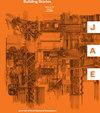衡量什么是重要的
IF 0.2
4区 艺术学
0 ARCHITECTURE
引用次数: 0
摘要
近八十年来,国家地理空间情报局(NGA)一直在圣路易斯市绘制地图,从月球表面到奥萨马·本·拉登藏身的大院,无所不包。2017年,这个联邦机构让三个地区网站在竞争中相互竞争,以举办价值数十亿美元的新总部。两年后,位于北圣路易斯的一块近100英亩“未开发的棕地”被选为这个护城河和军事化间谍总部的所在地,从“眼中钉变成了经济上的福音”。1经过几十年的城市更新、恶性忽视和不道德的房地产交易,这一所谓的催化发展根除了圣路易斯广场社区近一半的土地。虽然该项目被吹捧为圣路易斯的巨大胜利,主要是因为保留了城市所得税,但本文探讨了将经济增长(甚至只是经济保护)与进步混为一谈的现有成功措施如何未能捕捉到发展可能带来的实际社会、环境和经济成本。它考虑了难以衡量的城市社会性方面——例如,扎根性、乐观主义、机会和社会韧性——对于认识和提升空间正义在我们的设计决策和设计教学中的重要性至关重要。本文通过测量城市评估中忽略的一系列社会和经济因素,探讨了NGA搬迁到北圣路易斯的真实成本。它还考虑了邻近的第二个项目,拟建的Brickline Greenway,并探讨了其更具包容性的目标如何开始朝着修复迈出一小步。圣路易斯华盛顿大学城市设计硕士工作室的推测性设计工作提供了替代地图和设计解决方案,进一步推动了这一范式的转变。本文章由计算机程序翻译,如有差异,请以英文原文为准。
Measuring What Matters
For nearly eighty years, the National Geospatial-Intelligence Agency (NGA) has done its mapping—everything from the surface of the moon to the compound hiding Osama bin Laden—from the city of St. Louis. In 2017, this federal agency pitted three regional sites against each other in the competition to host their new billion-dollar headquarters. Two years later, a site of nearly one hundred acres of “underdeveloped brownfields” in North St. Louis was selected to go from “eyesore to economic boon” as the host of this moated and militarized spy headquarters. 1 This supposedly catalytic development eradicated nearly half of what was left of the St. Louis Place neighborhood following decades of erasure from urban renewal, malignant neglect, and unethical real estate transactions. While the project was touted as a massive win for St. Louis due primarily to preserving city income tax dollars, this essay examines how existing measures of success that conflate economic growth (or even simply economic preservation) with progress fail to capture the real social, environmental, and economic costs that development can bring. It considers how the difficult-to-measure aspects of city sociality—rootedness, optimism, opportunity, and social resilience, for example—are critical in recognizing and elevating the importance of spatial justice in our design decisions and design pedagogy. This paper explores the true costs of the NGA relocation to North St. Louis by measuring a broad range of social and economic factors ignored by the city’s assessment. It also considers a second adjacent project, the proposed Brickline Greenway, and explores how its more inclusive objectives begin taking small steps towards repair. Speculative design work from the Master of Urban Design studio at Washington University in St. Louis provides alternative mapping and design solutions that further this paradigm shift.
求助全文
通过发布文献求助,成功后即可免费获取论文全文。
去求助
来源期刊

Journal of Architectural Education
ARCHITECTURE-
CiteScore
0.60
自引率
0.00%
发文量
18
期刊介绍:
The Journal of Architectural Education (JAE) has been published since 1947 for the purpose of enhancing architectural scholarship in design, history, urbanism, cultural studies, technology, theory, and practice. Published on behalf of the Association of Collegiate Schools of Architecture, JAE appears twice annually in October and March, with the October issue being the first of a new volume.
 求助内容:
求助内容: 应助结果提醒方式:
应助结果提醒方式:


